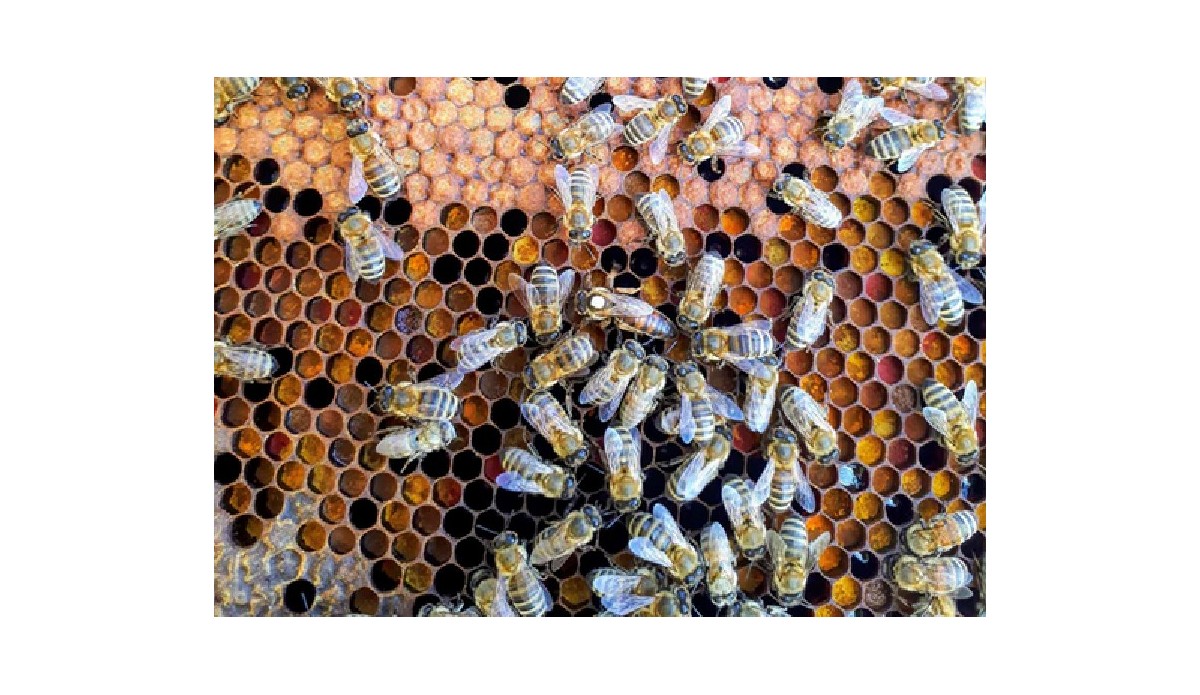Queen bee

Natural breeding and the function of the queen bee
Depending on the type of climate of each geographical area, the queen bee can live up to 5 years (in tropical or subtropical regions queen bees live much less time).
A hive can run out of queen bee for different reasons:
The hive has been orphaned due to several causes: When the hive has no queen bee, the hive perceives that it no longer has the real pheromones. Then the bees select some young larvae and start feeding them with royal jelly. They also build real cells in the central area of brood combs and feed the real larvae with a 100% royal jelly diet. The real larva is fed by young bees up to 2,000 times daily. It is young bees who feed the queen since their hypopharyngeal glands are more developed than those of adult bees (therefore, it is essential that there be young bees in the hives to raise quality queens). Actual cells can be 2.5cm long and 0.9cm in diameter. Royal jelly-based feeding will result in a queen bee. It is worth mentioning that the resulting queen through this procedure will not have received from the beginning of her larval state the feeding based on royal jelly (since the cells selected first were destined to raise larvae of worker bees and then fed them with royal jelly for raise queen bees). The queen bee that will remain as the only queen bee in the hive will be the one born first (therefore, it will be the one that has not received a 100% royal jelly feed). The queen that is born first (not fed only with royal jelly) will kill the other queen bees (fed only with royal jelly) that have not yet left their larval state. Therefore, only one queen bee will remain in the hive.
The hive bees replace their queen bee: this occurs when the hive perceives that the queen's posture is deficient and the bees receive less pheromones from that queen bee. Bees, receiving less amount of real pheromones, build real cells at the bottom or side edges of the honeycombs. The queen bee will oviposit in those real cells from which the queen bee that will replace her will be born. Queen bees that are born through this replacement process will have a higher quality because in this case the real larvae have received a 100% royal jelly diet.
Swarming: when the conditions are favorable in terms of temperature and flowering, and the hive has increased considerably in the number of bees, it may be the case that real pheromones are not enough for all bees. Then, the bees will build real cells on the edges of the honeycombs, from which the new queen will emerge. The swarm will leave the hive next to the old queen bee and form a new bee colony. Bees that leave with the old queen usually give rise to a single swarm. However, it may be the case that there are secondary swarms with virgin queens.
The queen larvae are nacre white, and are at the bottom of the royal cell, suspended in royal jelly. Royal larvae will receive throughout their development royal jelly. The larva accelerates its development during the first days until it occupies the entire length of the real cell. Then, the worker bees operate the real cell, spin a cocoon, have a rest period and go to a pupa stage (which lasts 7 and a half days longer).
After a total process of 16 days since the egg was laid, the queen bee is born by cutting the lower part of the real cell with its jaws.
Remember that there will be only one queen in each hive. Thus, the first queen bee that is born is cleaned and serviced by worker bees and will quickly look for the other real cells to destroy the real larvae (the other queen bees that have not yet hatched).
Thus, the queen bee that first hatches is the only one that will remain as the bee queen of the hive.
In the event that 2 queen bees hatch at once, then they will fight until only one remains as the only winner.
Approximately 1 week after the queen bee has left the real cell, it will make one or two orientation flights that will last approximately 2 or 3 minutes each flight.
Afterwards, the queen will make the fertilization flights. Each flight will last approximately 15 minutes in which it looks for areas where there are congregated drones. The same queen bee will copulate with an average of 10 drones. Drones die after copulating with a queen bee.
Two or three days after her last intercourse, the queen lays the first egg. The queen will no longer leave the hive, except if the queen swarms.
Keep in mind that, when replacing the queen bee of the colony with another selected queen bee (fertilized by drones of the same line), both the bees and the drones of the previous queen will die after 4 to 8 weeks. After this period of time, all the bees in the hive will have been replaced by the bees descended from the new selected queen bee that has been introduced.
It is important to raise queen bees with genetic selection criteria to look for lineages with higher productivity, excellent posture, meekness, and little tendency to swarm.
Mundoabejas.com team







Comments
No comment at this time!
Leave your comment